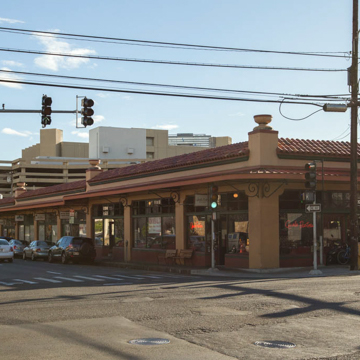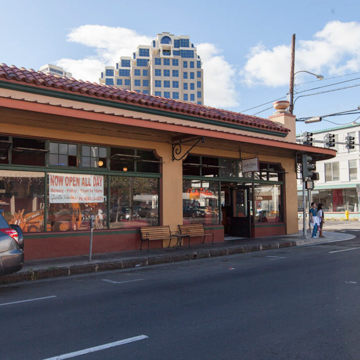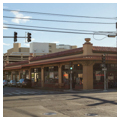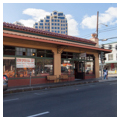Gracefully flowing down the entire 285-foot length of Pensacola Street between Young and Beretania streets, this single-story Spanish Mission Revival building, with its eye-catching urn finials, is the surviving portion of one of Honolulu's earliest shopping centers. The shopping complex originally occupied both sides of Pensacola Street, which was extended from Beretania to Young streets as part of this commercial development. The center's southeast side featured a corner building housing May's Groceteria and offered ample customer parking as the complex was situated in what was then the population center of Oahu, drawing patrons from Makiki, Manoa, Kaimuki, and Waikiki, as well as downtown and Nuuanu.
Henry May and Company opened its doors in 1854, the earliest known business in Honolulu to deal exclusively in groceries, all of which in the early years were imported from Britain. The groceteria portion of the shopping center was torn down in 1963 to make way for the branch building of First Hawaiian Bank and the Islands' first Safeway store. Supplanting the local food store by the second-largest supermarket chain in the United States all too well reflected an emerging trend of the post-statehood years.





